Talking With: Joel Bryant of “Empty America”
Interview with actor-comedian Joel Bryant, who set out on a solo road trip across America during COVID and captured a desolate pictorial landscape.
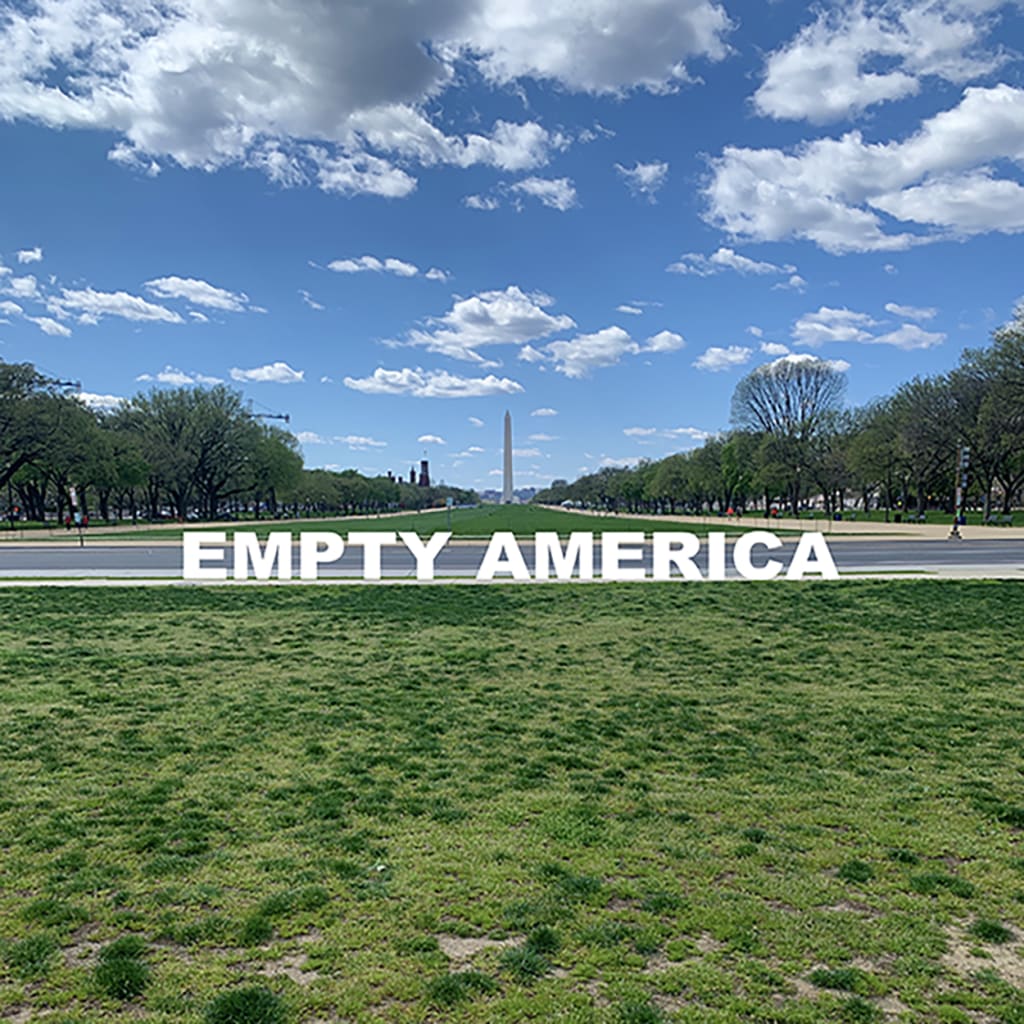
This edition of Talking With focuses on actor-comedian Joel Bryant, after unveiling his new documentary film “Empty America,” capturing a desolate look at the country.
When the pandemic shutdown took away his livelihood as a comic and actor, Joel packed his car and hit the highway with his trusted iPhone in tow. He snapped hundreds of photos and shot hours of video during the nomadic-style trip that spanned 8600 miles over three weeks from mid-March to early April, 2020. He traveled coast-to-coast stopping in 17 major cities with iconic locations, including Times Square, Bourbon Street, Venice Beach, Pike Place, Mall of America, Fisherman’s Wharf, Boston Common, DC’s National Mall and the Stockyards of Texas.
An amateur photographer, the Smithsonian’s National Museum of American History has acquired 134 of his photographs as part of the permanent COVID-19 Digital Photography Collection.
With the free release of the photos and documentary, Joel hopes to encourage people to donate to the many COVID relief charities.
To learn more, we are Talking With Joel Bryant about “Empty America.”
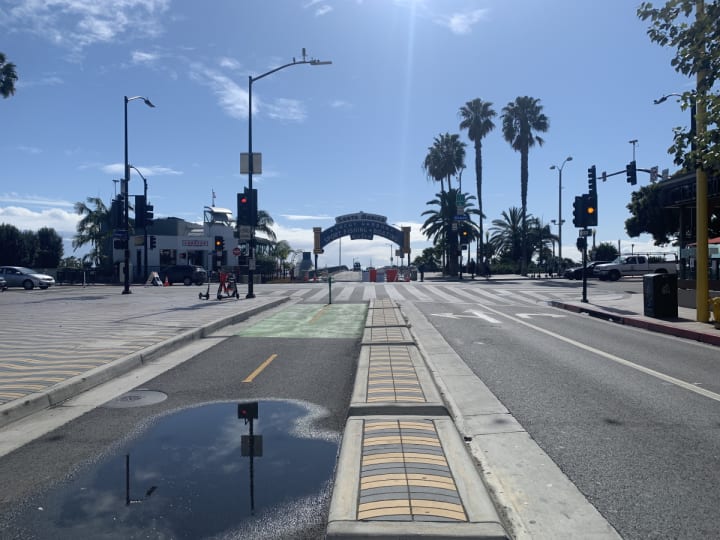
What inspired you to set out on this journey to photograph America during the pandemic shutdown?
JOEL BRYANT: As a freelance performer in live events who was also housed gig-to-gig, when the shutdown occurred, I was jobless and homeless with 2 days. And nothing on the calendar for the foreseeable future. I love a good road trip so I thought I'd just drive Los Angeles to New York and back. I had the time and nowhere to be. As I started to map out my route, I realized I'd be going through Las Vegas, Santa Fe, maybe see a friend in Savannah. I was thinking about this while killing an afternoon in Santa Monica. I realized how empty this city was and I'd seen videos of Las Vegas shutdown so the plan started from there: Drive LA to NY but hit usually-busy sites around America on the way to capture what the US looks like when it's totally closed.
Did you have an initial plan to create the documentary film “Empty America”?
JB: I had absolutely no plan when I started out. I had an idea of a southern route but made up most of the journey as I went, depending on where I could go, what was efficient, if I had a place to stay - which started to be in my car and cheap roadside motels. I decided on certain cities as I went. I decided to film it for posterity thinking it could be an interesting piece. It's only when I plugged all my footage into iMovie that I realized I had enough for a full-length documentary. But it all started from the one question: "I wonder what America looks like when it shuts down?" The rest just happened.
How did you determine which cities to visit?
JB: I thought about what might be interesting to see how they looked if they were totally empty. Truth is, I didn't know what I'd find or even if everything was as empty as I captured. When you think about cities that may be eerie to see empty, some were no-brainers: Las Vegas, New Orleans, New York. I did LA just because that's where my stuff was in storage. Las Vegas and Santa Fe is where I had family. I chose Savannah and Nashville because I had friends there I hadn't seen in a while. As I drove it just manifested depending on where I was headed next in my loop. I also knew I was on a bit of a time schedule because I didn't know if borders would be shut down and how long this shutdown would last, so I had to rule out cities like Austin, Miami and Kansas City.
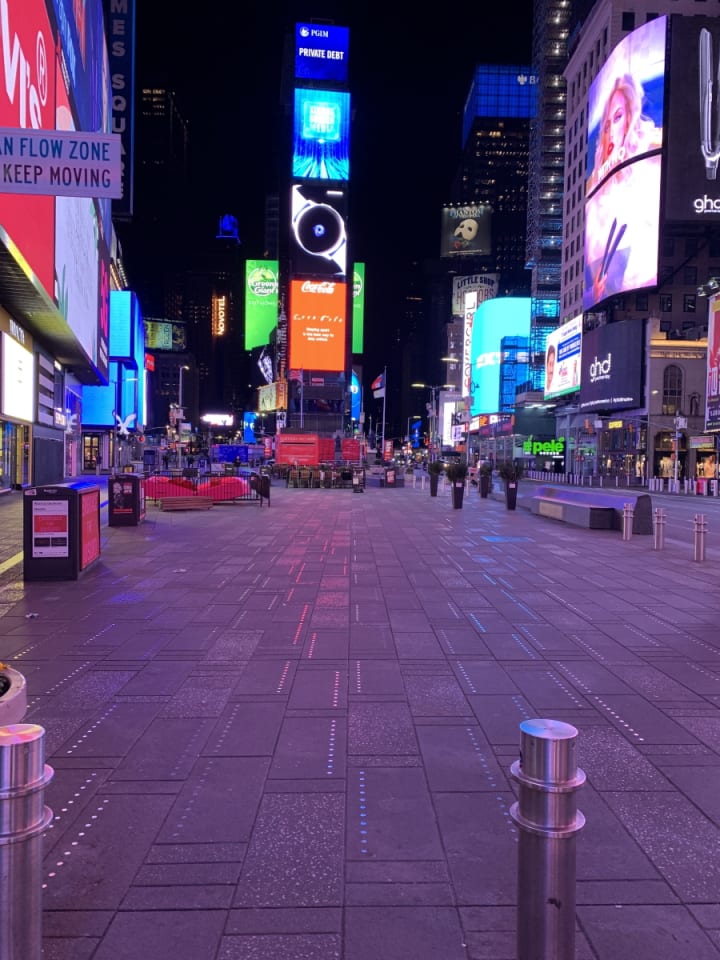
Did you have it all planned out before you left? Things like your gas and meal budget, lodging arrangements, etc.
JB: I had nothing planned out! For the record, that's not suggested. It was an idea I had one afternoon and set out the next day to start it. I'm a road-tripped by nature, so I wasn't worried about how to live on the road for 3 weeks. But I truly just made all of it up as I went. I let the story unfold itself. Luckily, prices for things like gas, food and lodging are really cheap during a pandemic. My only rule was I had to eat locally to support any local vendors that might still be doing some sort of curbside service, so I avoided fast food places and chain stores.
Was there a moment when you thought: what am I doing?
JB: Most of it, to be honest. Even in the film I start off bouncy and light-hearted in LA like: "This is going to be a fun piece." By the time I hit the northern route I was exhausted and affected by what I'd seen. I'd say when I did DC, Philadelphia and New York in one day, that was when I really started to teeter on regret. But I had already come that far. I started to sleep less, be paranoid about law enforcement stopping me and being nervous that this was all pointless because I didn't think I'd make it all the way back to San Francisco for the full loop.
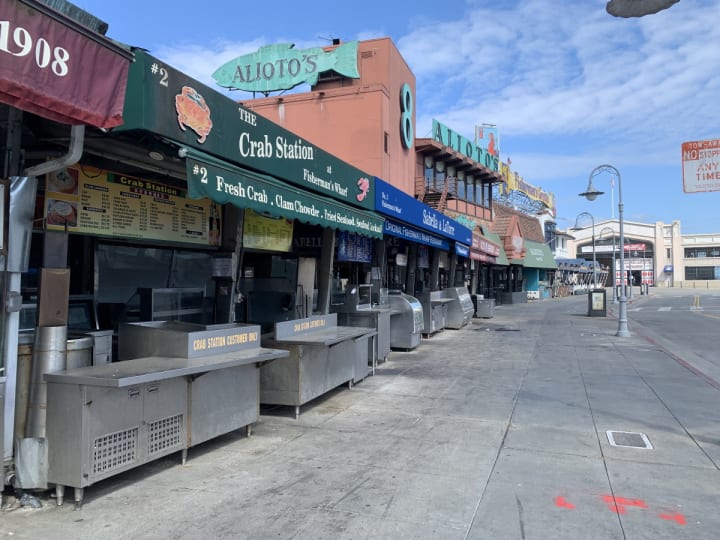
Your favorite moment from the trip?
JB: The thing that kept me going and gave me hope was the random bits of optimism I encountered on the road. This was a moment when we thought the pandemic would last 3 maybe 4 weeks, so there was hope. I met a restauranteur in Fort Worth - socially distanced, of course - who told me how 5-star restaurants were selling out then referring their customers to smaller locally owned businesses and how he hoped selling his raw items would bond families over dinnertime as they all could cook together. Every time I saw a sign in a window that expressed hope, it always gave me a smile. Truth is, most of the trip became eerie and sad, I wouldn't call those "favorite" moments but definitely glad I captured them, so those little bits of storefront optimism on signs gave me a little juice.
What did you personally learn from this journey?
JB: I've always carried Buddhist philosophy close to my chest and this just enhanced that. Mostly the idea that tomorrow is not guaranteed and all you have is this moment. I'm happy I did this the way I did it, spur of the moment because I was curious, but on a larger scale and looking back, that lesson definitely rings true: We had no idea what we were in for so there's no reason to live in the future when you have the now to make the most of.
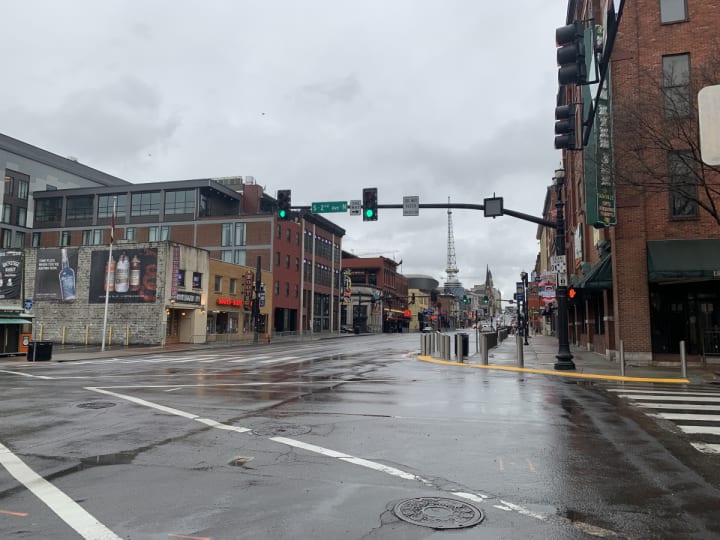
You aren’t a professional photographer, but your photos are now part of the Smithsonian – what’s that feel like?
JB: I'm still trying to wrap my head around it! It was certainly nothing I'd aimed for or dreamt of. Especially because this was just a curiosity project done on a whim and shot on an iPhone. I'm not a pro photographer by any means, but to be in the Smithsonian archives with such legends is humbling to say the least. The Smithsonian accumulated 600 photographs from various photographers capturing the pandemic at that time and of the 600, 134 of them were mine. To me, that's insane and frankly I'm not sure what to think about it! The best I can say is that I'm proud because I perform mostly in live events which are fleeting moments which exist in a moment in time. To have your photos archived is about as good of a legacy as you can leave behind when all is said and done.
Any plans to get back out there on the road again or what’s next for you?
JB: Oh, I'm always looking for the next road trip.... I still bounced around the rest of the year, helping with family stuff, seeing people in Europe, renting a cabin in Colorado for a few months. As long as you can live safely, you can still live the way you want to live. I did finally end up getting a small place in Palm Springs to plan out the next phase of my life and let this pandemic ease towards re-opening. Then when that happens? Well, we'll just have to see what's next....
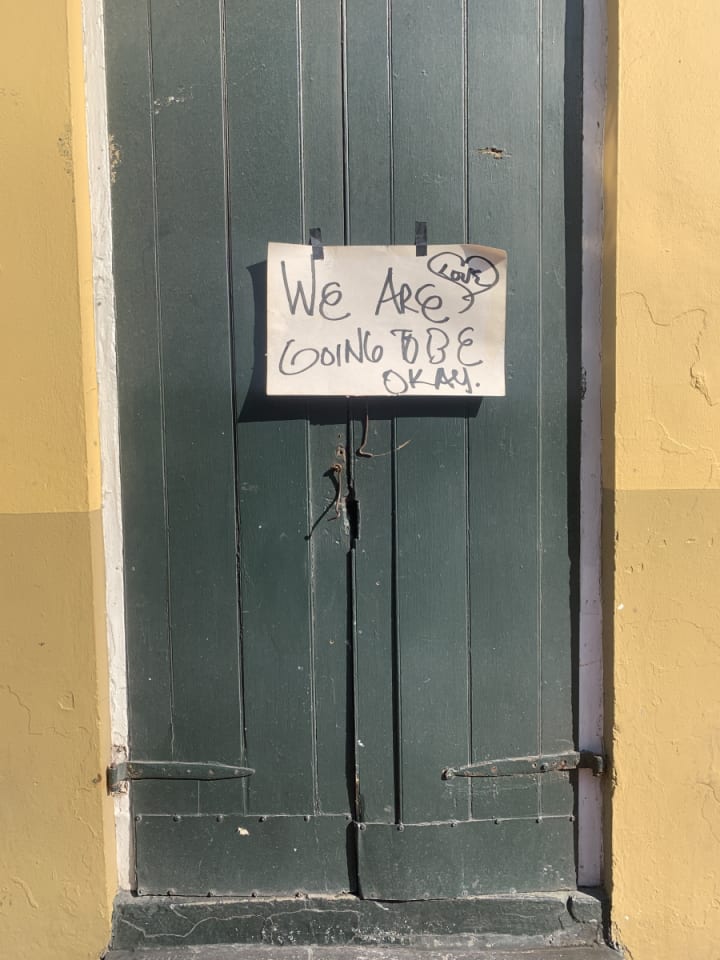
Lastly, what do you hope audiences will take away from “Empty America”?
JB: I only had 2 goals when I finally put it all together and put it out free on YouTube: Firstly, I thought it was an interesting time capsule that happened to capture a unique moment in history. This was when all of the US was on the same page, pre-BLM protests, pre-election, pre- the rest of 2020. It was a time when most of America was on the same page which, sadly, we rarely are anymore. So, I want people to watch it just as a reminder that we call can be united and to hopefully do what's necessary to avoid the eeriness I captured on film when the next global catastrophe hits. However, more importantly to me, I posted it for free and at the end I have links to 5 COVID relief charities so ideally, if you're moved enough when you watch the film, and you're able to, you can help out those less fortunate and we can all work together to pull each other up out of this and on to a brighter future. We've been through so much negativity, hopefully by showing that then offering a glimmer of hope, we can get back on a path towards positivity.
Those 5 charities are LiveEventsCoalition.org, ActorsFund.org, FoundationForContemporaryArts.org, OpportunityFund.org and JamesBeard.org.
Or just donate to one of your choice, help out a neighbor or support small local business. If you do that after watching my piece, my goal is met.
Watch “Empty America” for FREE at: JoelBryant.net or on YouTube
And, check out the COVID-19 Digital Photography Collection
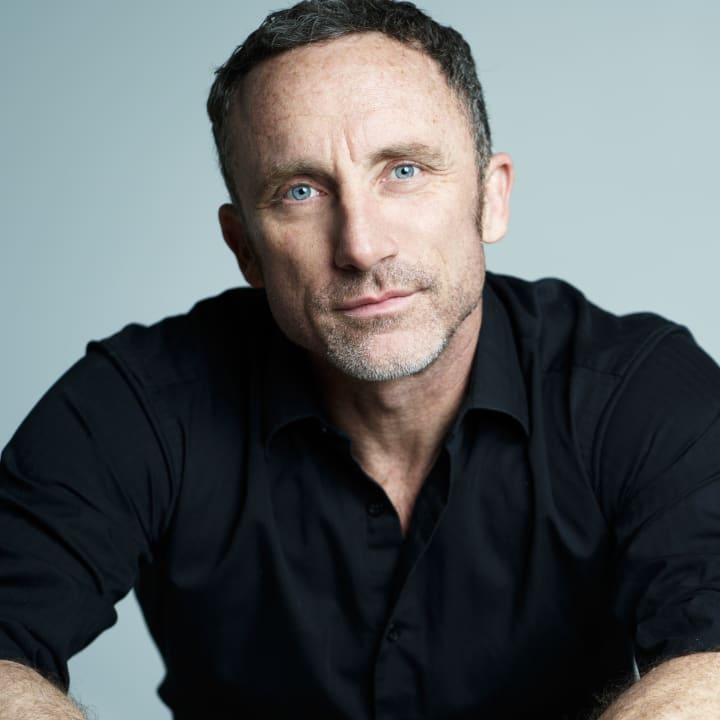
About the Creator
FierceScribe
I write about entertainment and the inspiring people who create it. Interviews with actors and filmmakers revealing their latest projects and what influences them creatively.

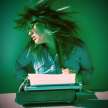
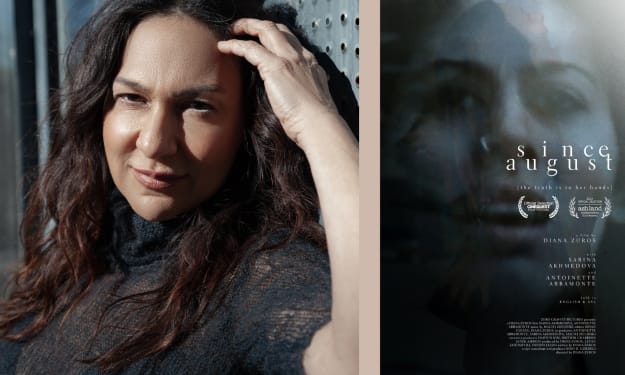

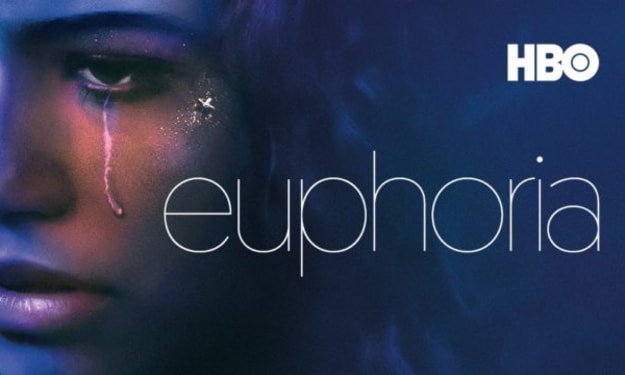

Comments
There are no comments for this story
Be the first to respond and start the conversation.